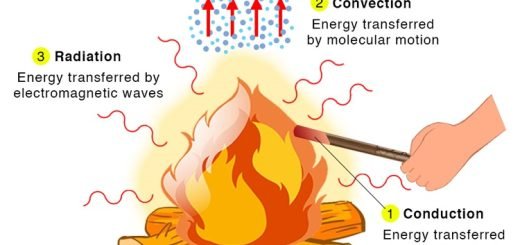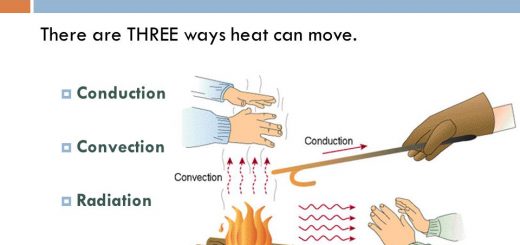Potential energy, Kinetic energy and Law of conservation of mechanical energy
At the maximum height of a projectile, its mechanical energy is equal to its potential energy only because the mechanical energy of an object is the sum of potential and kinetic energies of the object and the kinetic energy at the maximum height equals zero, so, the mechanical energy at the maximum height equals the potential energy only.
Conservation of mechanical energy
The law of conservation of energy states that the energy is neither created nor destroyed, but it is converted from one form to another, When you pull a simple pendulum away from its rest position to a higher position, then leave it, the pendulum moves on both sides around its rest position.
The speed of the vibrating pendulum decreases as it goes away from its rest position, The speed is maximum when it passes its rest position during its movement, Pulling the pendulum to a higher position means that there is work done which is stored in the pendulum in the form of potential energy.
When the pendulum passes its rest position, its speed is maximum, so, Kinetic energy is the maximum, Potential energy is the minimum, Mechanical energy = Potential energy + Kinetic energy.
When the pendulum reaches the maximum height, its speed is zero, so, kinetic energy is zero, Potential energy is the maximum, Mechanical energy = Potential energy, The pendulum keeps moving right and left around its rest position, keeping its mechanical energy value constant due to the exchange between the potential and kinetic energies as the mechanical energy = P.E. + K.E.
When you bring two similar pendulums, then pull one of them and leave it, When the moving pendulum strikes the pendulum that at rest, the rest one moves and the moving one stops, During the collision, the potential and kinetic energies are exchanged between the two pendulums, where each of them keeps its mechanical energy value constant.
Each moving body keeps its mechanical energy constant (which alternates between potential energy and kinetic energy), where the increase in potential energy means a decrease in kinetic energy and vice versa, (Where the air resistance is negligible).
The motion of the children’s swing is like that of the pendulum because in both of them, the potential energy and kinetic energy are interchanged without ending and the sum of such energies (the mechanical energy) at any moment is constant.
Although the decrease in the value of potential energy of an object during its falling, its mechanical energy still constant because the decrease occurs in the potential energy of an object during falling equals the increase in its kinetic energy.
The value of the kinetic energy of an object couldn’t be more than its mechanical energy because the mechanical energy of an object is the sum of potential & kinetic energies of the object.
The moving object keeps its mechanical energy during motion constant because mechanical energy is the sum of potential and kinetic energies of the object and the decrease in the kinetic energy of the moving object equals the increase in its potential energy and vice versa.
In the simple pendulum, the kinetic energy of the vibrating body is maximum when it passes its rest position during its movement because at that position, the speed of the pendulum is maximum and K.E. = ½ × Mass × (Speed)².
When the pendulum reaches the maximum height, the kinetic energy equals zero because, at the maximum height, the speed of the pendulum equals zero and the Kinetic energy = ½ × Mass × (Speed)².
When the pendulum reaches the maximum height, the potential energy equals the mechanical energy because, at the maximum point, the kinetic energy equals zero.
The motion of the children’s swing is like that of the pendulum because, in both of them, the potential energy and kinetic energy are interchanged without ending and the sum of such energies (mechanical energy) at any moment is constant.
Law of Conservation of mechanical energy in everyday life
Energy resources & forms, Potential energy, Kinetic energy & Mechanical energy




This really helped thank you
Thank you very much for your comment